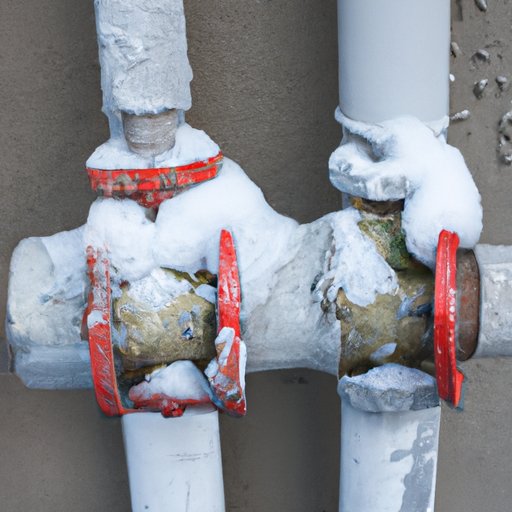Introduction
When the temperature drops, frozen pipes become a common problem for homeowners. Not only can they be a major inconvenience, but if left untreated, frozen pipes can cause severe damage to your home’s plumbing system. In this article, we will discuss several tips and tricks for preventing frozen pipes.
Insulation
Insulating your pipes is the best way to prevent them from freezing. Pipes that are exposed to cold air are more likely to freeze than those that are insulated. You can add insulation to pipes in a variety of ways. One way is to use pre-formed foam insulation, which you can purchase at any hardware store. Another way is to use heat tape, which is a type of electrical heating wire that can be wrapped around pipes to keep them warm.
The benefits of insulating your pipes are numerous. Not only does it prevent them from freezing, but it also helps to conserve energy. By insulating your pipes, you can keep hot water hot and cold water cold, which means less energy is needed to heat or cool the water as it travels through your home’s plumbing system.
Maintenance
To prevent frozen pipes, it’s essential to keep your plumbing system in good condition. One of the best things you can do is to schedule routine maintenance checks. A plumber can check your pipes for cracks and leaks, which can lead to frozen pipes. It’s also important to drain any outdoor faucets and hoses before winter arrives.
If you do find cracks or leaks in your pipes, it’s crucial to seal them as soon as possible. You can use a variety of materials to seal cracks and leaks, including silicone sealant, pipe wrap, and duct tape.
Leaving Water Running
During extreme cold temperatures, you may need to leave your water running to prevent your pipes from freezing. It’s essential to do this safely to avoid any water waste. A good rule of thumb is to run a faucet at a slow drip. This keeps the water moving through your pipes, which is much harder to freeze. It’s also a good idea to choose a faucet that is farthest from your home’s main water valve.
Weatherstripping
Gaps around windows and doors can cause cold air to enter your home and freeze your pipes. One way to prevent this is by using weatherstripping to seal any gaps. You can purchase weatherstripping at any hardware store and apply it to the gaps around your windows and doors. It’s a simple and inexpensive way to prevent frozen pipes.
Shut-off Valve
Knowing the location of your home’s shut-off valve is essential in preventing frozen pipes. If a pipe does freeze, you need to be able to shut off the water supply to prevent any further damage. Your shut-off valve is typically located near your home’s water main. It’s a good idea to locate it before winter arrives so you can be prepared in case of an emergency.
Conclusion
Frozen pipes can be a headache for homeowners, but by taking some simple precautions, you can prevent them from happening. Insulating your pipes, scheduling routine maintenance, leaving water running, weatherstripping, and knowing the location of your shut-off valve are all essential steps in keeping your pipes in good condition and running smoothly during the cold winter months.
Don’t wait until it’s too late. Take action now to prevent frozen pipes and ensure a warm and functional home all winter long.
